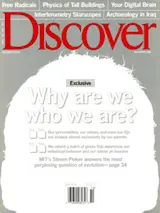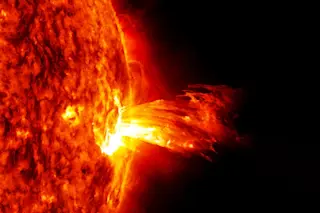Long before medieval festivals merged with early Christian rituals to create Allhallows' Eve—later shortened to Halloween—the sky staged its own version of trick or treat. Inexplicable celestial events brought beauty but also fueled so much anxiety that the word disaster originally meant "bad star." Auroras seemed eerie, meteor showers were startling, and solar eclipses shot off the anxiety scale. Scientists have since stripped the ominous mystery from these events, yet the latest studies have repeatedly affirmed that the sky really is a source of danger.
Once a source of morbid myth, the dust-cloaked Pleiades now helps astronomers study stellar evolution.Photograph by David Malin/Anglo-Australian Observatory/Royal Observatory, Edinburgh.
The greatest risks are often invisible. Muons, subatomic particles 200 times heavier than electrons, continuously crash through our bodies. Created when cosmic rays smash into the nuclei of atmospheric atoms some 40 miles up, muons occasionally strike critical bits of genetic material in the ...














